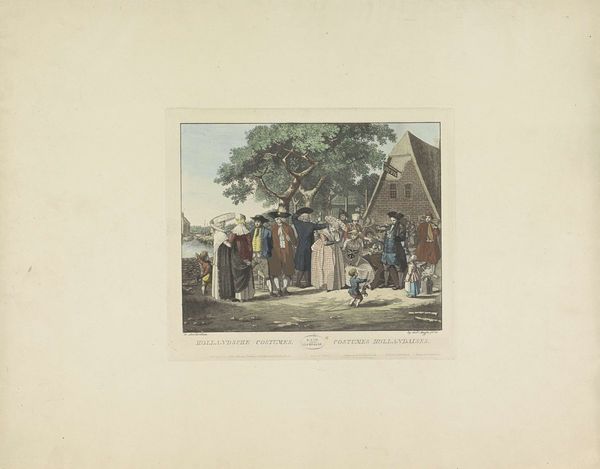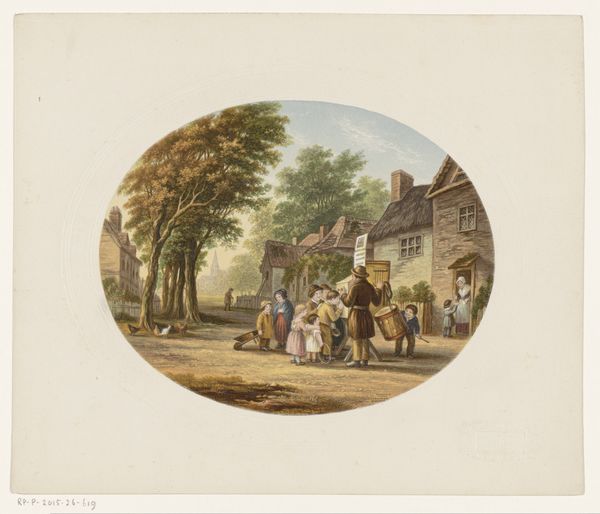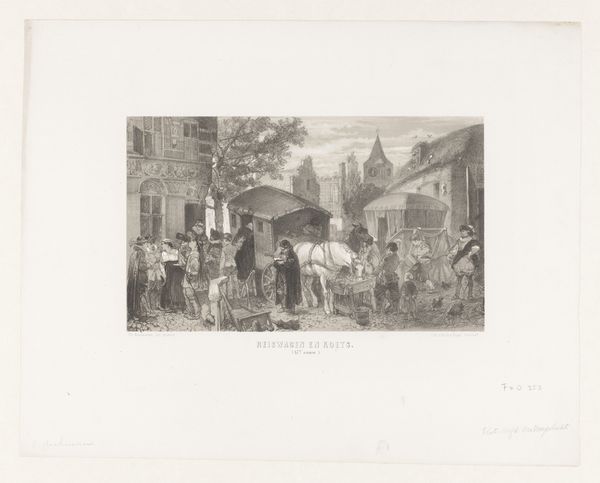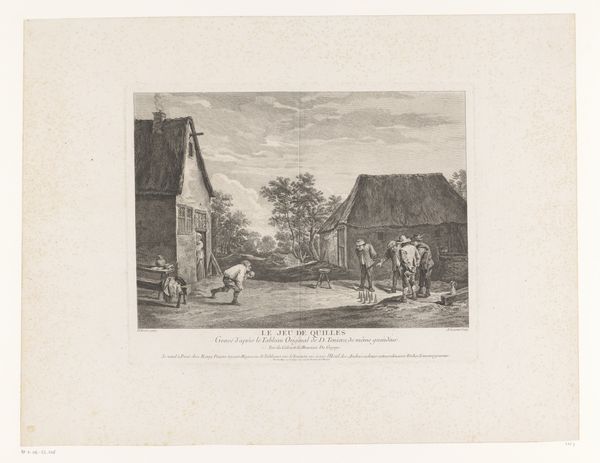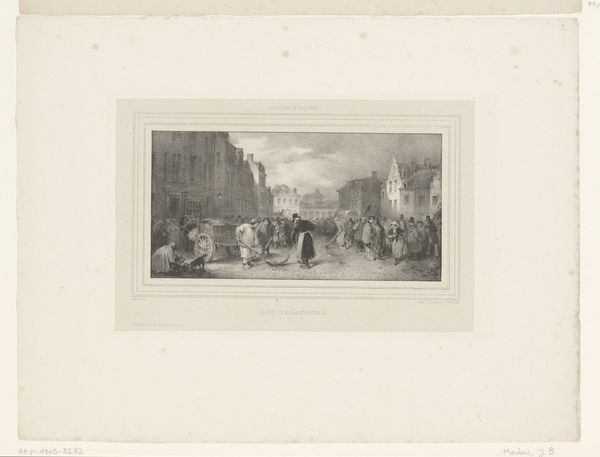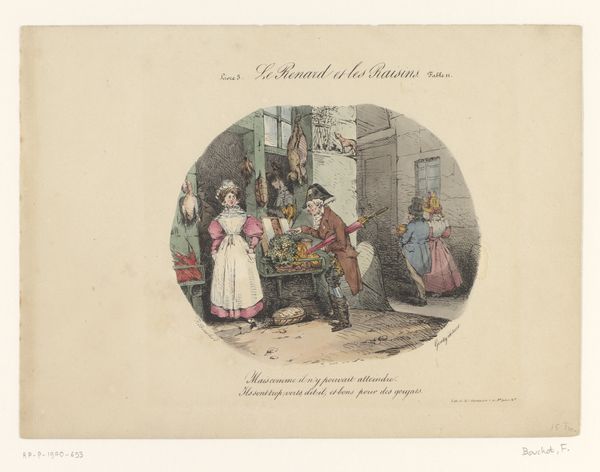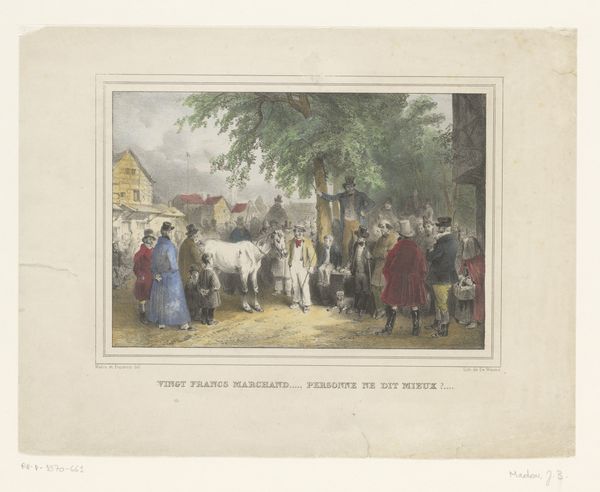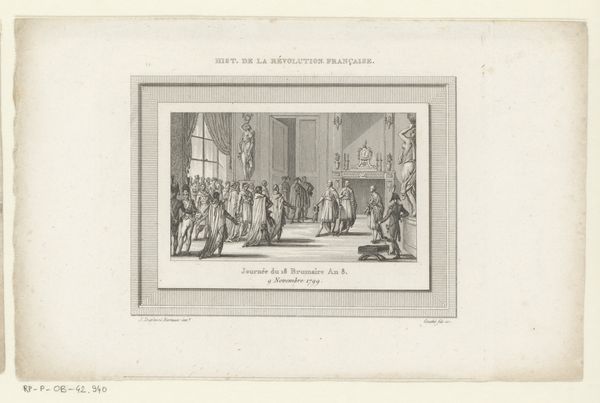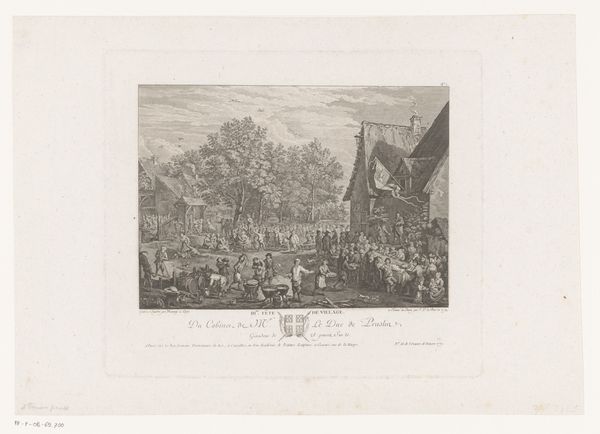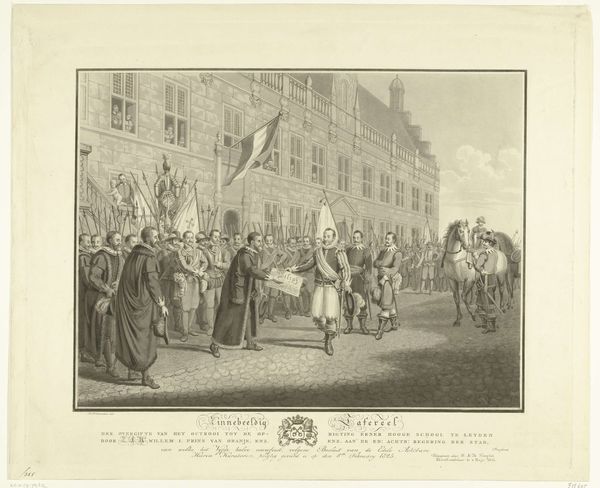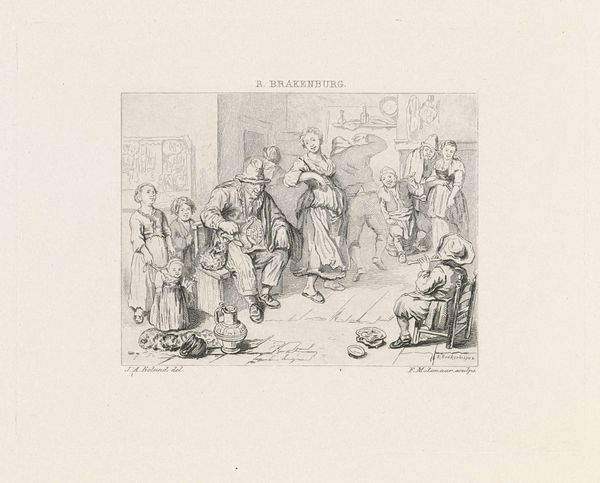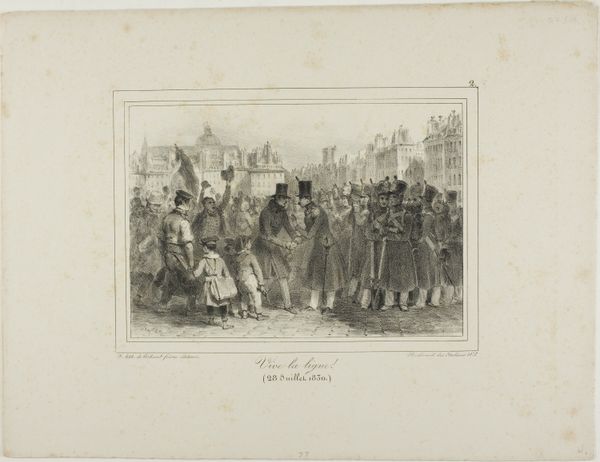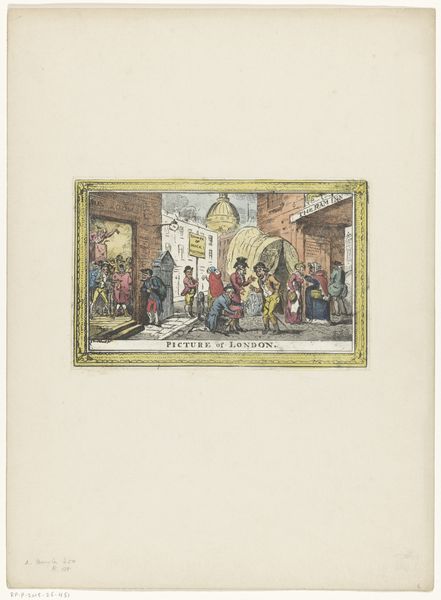
Twaalf personen in klederdracht van verschillende steden, ca. 1820-1830 1820 - 1830
0:00
0:00
print, etching, engraving
#
dutch-golden-age
# print
#
etching
#
figuration
#
romanticism
#
costume
#
cityscape
#
genre-painting
#
engraving
Dimensions: height 233 mm, width 268 mm, height 443 mm, width 570 mm
Copyright: Rijks Museum: Open Domain
Curator: Look at this fascinating print entitled "Twelve People in Traditional Dress from Different Cities," created around 1820-1830 by Ludwig Gottlieb Portman. Editor: It has such a delightful lightness to it. The airy quality of the etching, combined with the subtle washes of color, gives the scene an almost dreamlike feel, even though it's depicting what appears to be an everyday street scene. Curator: Exactly. It offers a valuable insight into the social and cultural fabric of the Netherlands during that period. Costume books like these became quite popular, serving various purposes, from documenting regional differences to promoting national identity during a time of political upheaval in Europe. Editor: Notice how each figure is meticulously rendered? Portman pays such close attention to the distinct fabrics, the fall of the folds, the delicate details of the bonnets and caps. It is about contrasts, as we can perceive on a deeper formal level. Curator: And those costumes themselves held significance. They signified regional pride and allegiance, reflecting the decentralized nature of Dutch society at the time. This print becomes a record of those regional identities before the forces of standardization gained further traction. Editor: There's also the intriguing compositional structure. The artist plays with horizontals and verticals. For example, there is that prominent building that frames the figures, anchoring the composition and contrasting nicely with the soft forms of the clothing and figures. Curator: I agree. And it also emphasizes the setting— a Dutch townscape, establishing the environment in which these costumes were worn. Consider the rise of Dutch nationalism after the Napoleonic era—depicting this diversity within a unified landscape subtly reinforces a sense of national identity. Editor: I also wonder if you noted that play of light, specifically in the building area. How does it convey time, creating an emotional register through a clear articulation? Curator: Ultimately, I feel this print gives voice to everyday people. Editor: It really makes you consider that. The level of observation given on the clothing gives it, in my mind, value beyond documentation.
Comments
No comments
Be the first to comment and join the conversation on the ultimate creative platform.
